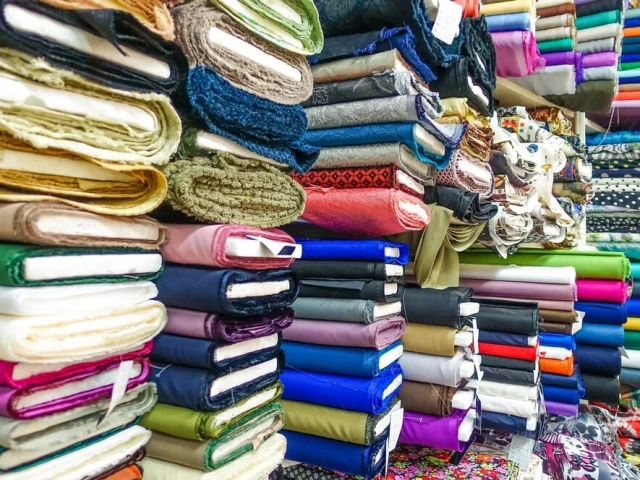LAHORE:
Pakistan’s textile exports for the fiscal year 202425 have shown a surprisingly positive trend, recording a 7.22% increase and reaching $17.88 billion, compared to $16.68 billion in the previous fiscal year. This growth has come despite several domestic and international challenges that had raised concerns among industry experts and textile millers about a potential decline.
Though the figure still falls short of the record $19.30 billion achieved in FY22, the recovery has brought cautious optimism to the country’s most significant export sector.
Monthly data from June 2025 shows exports reached $1.53 billion, up by 7.75% from June 2024. Between July 2024 and May 2025, textile exports totalled $16.37 billion, showing a steady year-on-year rise of 7.37%. Within the sector, value-added products led the recovery, with knitwear exports growing by 14.46%, readymade garments by 16.35%, and bedwear by 10.56%. However, yarn exports took a hit and declined notably, reflecting changing demand patterns and the ongoing challenges in the upstream segment of the textile supply chain.
This performance comes as a surprise to many textile millers, who had previously expressed serious concerns that FY25 might end in disappointment due to rising inflation, high energy tariffs, burdensome taxation, political instability, and weak global demand.
“To be honest, most of us had braced for a decline,” said Faisal Shareef, an executive of a textile mill. “With input costs shooting up, energy shortages worsening in summer, and no long-term textile policy from the government, we feared losing international orders. But demand from Europe and the Middle East picked up slightly, and we managed to push value-added products.”
One of the key contributors to this rebound appears to be a renewed post-pandemic momentum, where some global buyers resumed procurement from Pakistan after exploring alternate sources during the crisis period. Although overall purchasing power in many developed economies remained subdued, a modest recovery in retail apparel sales abroad translated into increased demand for Pakistan’s textile products.
Economists argue that the export increase is encouraging but it does not reflect a full-fledged revival. “The growth number seems good on paper, but we must remember this is not a return to historic highs. Structural issues remain, and the absence of a long-term industrial policy is hurting the competitiveness of the textile sector,” said economist Dr Hira Mehmood. “Energy costs, multiple layers of taxes, and an uncertain rupee-dollar exchange rate all make it difficult for exporters to plan ahead.”
Additionally, exporters had to navigate through several external hurdles. The international shipping situation remained tense in FY25, especially due to issues in the Red Sea route and rising container costs. Some traders also raised concerns about potential disruptions in the event of heightened tensions in the Middle East and the uncertain direction of the US trade policy under the Trump 2.0 administration. “Tariff revisions and the possibility of the US pulling back preferential access to certain countries have made our buyers nervous,” said Salman Rafi, a textile exporter based in Karachi. “Buyers are placing smaller orders more frequently instead of locking in large volumes for the year.”
Meanwhile, the diplomatic situation with India also affected regional textile trade dynamics. There were fears of further restrictions or disruptions if tensions between the two nuclear neighbours escalate. While these did not directly block textile exports, the uncertain geopolitical climate added a layer of risk in long-term contracts.
But despite these difficulties, the sector showed resilience largely due to a pivot toward value-added goods and better market segmentation. “We shifted our focus from raw material and intermediate products to finished items, and that made a big difference,” said Rafi. “Margins are better in garments, and customers appreciate customised offerings.”
For FY26, industry is now hopeful that if macroeconomic stability improves and power tariffs are rationalised, Pakistan’s textile exports could test the $20 billion mark, if not in FY26 then definitely in FY27. Some, however, remain cautious. “With domestic inflation still high, electricity bills killing our margins, and no clarity on tax rebates, we can’t plan more than a few months ahead,” said Shareef. “If the government listens to the industry and provides real support, we can touch new highs. Otherwise, we might again struggle.


